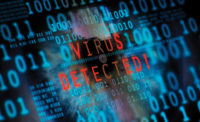Education & Training
Tools and training for security professionals

PeopleImages / E+ via Getty Images

Brent O’Bryan, SPHR, SHRM-SCP, is Senior Vice President, Training & Organizational Effectiveness at Allied Universal.


While many people around the country were under stay-at-home orders, many security professionals, classified by the federal government as essential personnel, have continued to report to work during the pandemic. The heart and soul of the physical security business are the nation’s contract security professionals who assume leadership roles – sometimes with lifesaving ramifications – at facilities across country. Security professionals act as the first line of defense against civil unrest, violence, terrorist attacks and the pandemic.
For security professionals, working during a pandemic can be fraught with tension as we all navigate this new terrain. The Occupational Safety and Health Administration (OSHA) and The Centers for Disease Control (CDC) both recommend social distancing procedures, regular disinfection and sanitation and foot traffic management; all of which can be challenging to control.
Today’s security professional is a highly trained employee with access to cutting-edge technology including artificial intelligence. They are trained to implement a variety of safety and health screening services. Security professionals are also working with their clients to design and implement screening solutions that best fit the environment, requirements and existing security operations. State-of-the-art technology that connects artificial intelligence and human response to better protect people with accurate real-time data and safer social interaction is the ‘gold standard’ in our industry.
The professional security sector is growing exponentially and the need for security professionals to be comprehensively trained, during and beyond the pandemic, is vital. The Freedonia Group, an international business research group, reports that global security service revenues are forecast to rise 3.6% per year to $263 billion in 2024. How can we keep the flourishing physical security workforce ready and able to take on the daily challenges they face in divergent sectors across multiple industries? How can we develop the on-boarded talent and present them with opportunities that strengthen their career and provide a roadmap to success?
Security professionals require continual training and learning with opportunities and a clear pathway to advancement. The physical security services industry has advanced greatly thanks to the recognition that training and leadership are crucial to executing often complex missions at diverse job sites. Security professionals are leaders who are a vital part of a facility or community’s safety and security – working in conjunction with local law enforcement, fire chiefs and emergency medical responders. The next level of growth in the security sector demands the development of ‘ready now’ leaders who are prepared to occupy the next rung on the leadership ladder.
Recruiting During the Pandemic
While the pandemic has created many job losses in some sectors, the physical security sector has been onboarding tens of thousands of people to their ranks. While some geographic markets are hosting in-person career days at their regional offices, hiring events now also include socially-distant protocols including ‘drive-through’ career days with hiring managers meeting up with prospects as they drive up to the parking lot, as well as fully virtual hiring events on Zoom.
As we onboard thousands of new employees, some who may not have considered working in the security sector prior to the pandemic, it is vitally important that they understand that the security industry is full of opportunity and upward advancement. The security services industry as a whole has advanced greatly thanks to the recognition that training and leadership are crucial to executing often complex missions at diverse job sites.
The role and responsibilities of each security professional varies enormously. Technology tools have dramatically expanded the horizons for security professionals. Education beyond the traditional classroom has been transformed with web-based tutoring, access to real-time officer evaluation systems, and officer access to coursework from multiple locations. Coaching and training, which encourage security professionals to learn real-world skills that enable them to lead people and rise to senior management posts, are best delivered by one-on-one mentoring programs and small workshops.
How do you define success in your physical security program? Consider metrics that include meeting specific goals or use benchmarks from employee surveys and incident reports. Whatever the measure, you will need to determine the right processes, people and technology to ensure that success is attainable. For security services providers, one measure of success is training implementation, participation and effectiveness. Is your training a catalyst for success?
Training that speeds change and action always includes:
- Core – Great training programs establish a clear overview of the expectations and standards for a position. In this stage, knowledge is provided and tested. Core training lays the foundation for future development.
- Site-Specific – With a solid foundation, security professionals can apply their knowledge in practical ways. Site-specific training includes industry-specific development. During this phase, security professionals begin to move from generalist to specialist, enhancing productivity and responsiveness.
- Ongoing – As environments and regulations evolve, so must knowledge. Training has equal purpose at every step in a career. To remain responsive and vigilant, security officers must experience continuous learning, and management support ensures what’s learned is applied.
- Reinforcement – Training will never be a catalyst for success if it is always an event. The ‘one and done’ philosophy will fall flat when tested in an emergency. Training reinforcement can be a performance measure. Reinforcement, more than any other aspect of training, will build a learning culture that speeds significant change and action.
- Accessible and Engaging Content – The best time for learning is when the student is available. A mix of classroom and online training ensures that information is accessible. Retention improves with content and delivery that are engaging, creative and multi-faceted, yet maintains the integrity of the subject.
The most effective learning and development culture is one where the students seek out learning opportunities and supervisors support this learning, and make sure they are growing in their leadership roles. Whether the courses are voluntary or required, the end result is the same – more knowledgeable and better prepared security professionals poised to create and maintain safe and secure environments.
Distance learning should be convenient and flexible for security professionals. Online learning also enhances information technology skills and fosters new ways of constructing knowledge and is quicker and more efficient. Distance learning also encourages continued learning and is especially helpful for voluntary programs. Many security professionals do not keep typical 9-to-5 work days and are better able to participate in additional training that is flexible and available when their schedules permit.
HR leaders that provide a clear pathway to ‘upskill’ their internal workforce will result in active engagement with employees improving their lives, career prospects and their interaction with other employees and clients. So, how does an organization go about ‘upskilling’ their current security workforce? A combination of talent assessment, talent planning, continuous talent development and internal promotions are the hallmark of a successful ‘upskill’ corporate environment.
That ‘upskill’ community includes a learning culture where security professionals never stop discovering and have access to the resources that they need to develop leadership skills. The successful execution of a learning culture demands a constant commitment to excellence. Training and learning are only fully realized when the expectation – and reality – is that learning is continuous. There is no denying the importance of new employee onboarding and training. But if the learning ends there, the prospects for employee success and career development quickly diminish. However, learning that is ongoing, regardless of tenure with an organization or industry, creates an environment where skills are developed and refined, best practices are readily implemented and satisfaction is gained in the application of knowledge.
When this is the standard and foundation of all security operations, leaders flourish. Whether an individual’s responsibilities are to oversee an entire organization, conduct security patrols at a hospital or produce accurate payroll and billing, the need for leadership is always present. Leaders take pride in their work, strive to exceed expectations and support those around them. Those attributes are necessary in every aspect of a security operation and learning provides the knowledge and confidence to succeed.
Engagement in a learning culture promotes constant development, results in service excellence and encourages employees who may start standing post at an entry level position to work their way up through the company with the support of the organization. The successful execution of a learning culture demands leadership support, alignment with client objectives and the deployment of the best learning technology. Developing and maintaining a learning culture, and valuing leadership at all levels, ensures that development opportunities are not only available for security professionals at all levels, but proactively sought out and utilized by all security professionals.
Looking for a reprint of this article?
From high-res PDFs to custom plaques, order your copy today!








